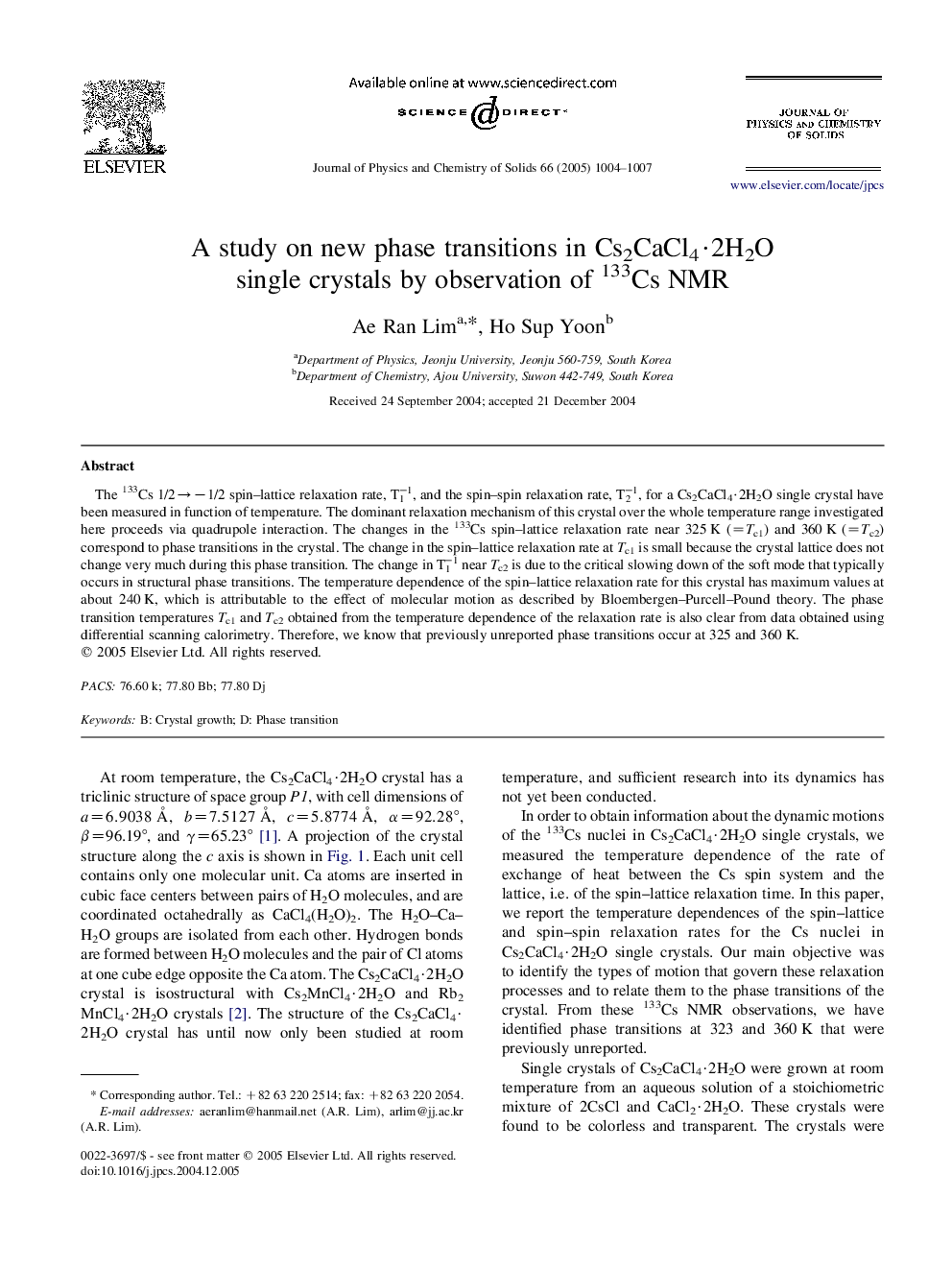| Article ID | Journal | Published Year | Pages | File Type |
|---|---|---|---|---|
| 9781698 | Journal of Physics and Chemistry of Solids | 2005 | 4 Pages |
Abstract
The 133Cs 1/2ââ1/2 spin-lattice relaxation rate, T1â1, and the spin-spin relaxation rate, T2â1, for a Cs2CaCl4·2H2O single crystal have been measured in function of temperature. The dominant relaxation mechanism of this crystal over the whole temperature range investigated here proceeds via quadrupole interaction. The changes in the 133Cs spin-lattice relaxation rate near 325 K (=Tc1) and 360 K (=Tc2) correspond to phase transitions in the crystal. The change in the spin-lattice relaxation rate at Tc1 is small because the crystal lattice does not change very much during this phase transition. The change in T1â1 near Tc2 is due to the critical slowing down of the soft mode that typically occurs in structural phase transitions. The temperature dependence of the spin-lattice relaxation rate for this crystal has maximum values at about 240 K, which is attributable to the effect of molecular motion as described by Bloembergen-Purcell-Pound theory. The phase transition temperatures Tc1 and Tc2 obtained from the temperature dependence of the relaxation rate is also clear from data obtained using differential scanning calorimetry. Therefore, we know that previously unreported phase transitions occur at 325 and 360 K.
Keywords
Related Topics
Physical Sciences and Engineering
Materials Science
Electronic, Optical and Magnetic Materials
Authors
Ae Ran Lim, Ho Sup Yoon,
